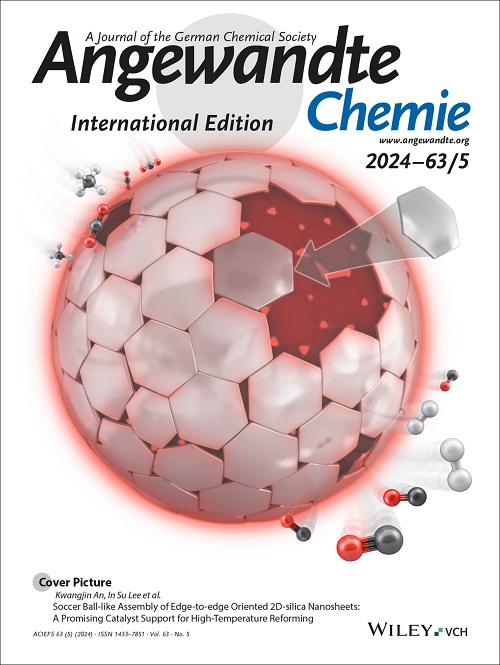Chemical recording of pump-specific drug efflux in living cells
IF 16.1
1区 化学
Q1 CHEMISTRY, MULTIDISCIPLINARY
引用次数: 0
Abstract
Drug efflux — a process primarily facilitated by efflux pumps such as multidrug resistance proteins (MRPs) — plays a pivotal role in cellular resistance to chemotherapy resistance. Conventional approaches to assess drug efflux are predominantly conducted in vitro and often lack pump specificity. Here we report the bioorthogonal reporter inhibiting efflux (BRIEF) strategy, which enables the recording of pump-specific drug efflux in living cells. In BRIEF, a specific substrate is engineered as a bioorthogonal efflux probe (BEP) for specific pumps. The cellular concentration and protein labeling level of the probe can be augmented when the test drug is transported by the same pumps. Serendipitously, we discovered that per-O-acetylated unnatural monosaccharides, initially designed for metabolic glycan labeling, are exported by some MRPs. Using Ac4GlcNAl as a BEP, we studied the structure-efflux relationship of flavonoids and identified small molecules, including tannic acid, cholesterol and gallic acid, as novel MRP substrates in high-throughput screening. Tannic acid, known for anti-tumor and anti-SARS-CoV-2 properties, showed increased efficacy upon MRP inhibition. Additionally, BRIEF was adapted to assess p-glycoprotein-mediated efflux using Rhodamine 123 as a BEP, leveraging its light-activatable proximity labeling ability. BRIEF provides a versatile approach to investigate drug efflux and enhance chemotherapy strategies.活细胞中泵特异性药物外流的化学记录
药物外流--一个主要由多药耐药蛋白(MRPs)等外流泵促进的过程--在细胞抵抗化疗耐药性的过程中起着举足轻重的作用。评估药物外流的传统方法主要在体外进行,而且往往缺乏泵的特异性。在此,我们报告了抑制药物外流的生物正交报告策略(BRIEF),该策略可在活细胞中记录泵特异性药物外流。在 BRIEF 中,特异性底物被设计成生物正交流出探针(BEP),用于特异性泵。当测试药物由相同的泵转运时,探针的细胞浓度和蛋白质标记水平就会增加。我们偶然发现,最初为代谢糖标记而设计的过-O-乙酰化非天然单糖会被某些 MRPs 输出。利用 Ac4GlcNAl 作为 BEP,我们研究了黄酮类化合物的结构-外流关系,并在高通量筛选中发现了作为新型 MRP 底物的小分子,包括单宁酸、胆固醇和没食子酸。单宁酸具有抗肿瘤和抗 SARS-CoV-2 的特性,在抑制 MRP 时显示出更强的功效。此外,利用罗丹明 123 作为 BEP,BRIEF 还可用于评估 p-glycoprotein 介导的药物外流。BRIEF 为研究药物外流和加强化疗策略提供了一种多功能方法。
本文章由计算机程序翻译,如有差异,请以英文原文为准。
求助全文
约1分钟内获得全文
求助全文
来源期刊
CiteScore
26.60
自引率
6.60%
发文量
3549
审稿时长
1.5 months
期刊介绍:
Angewandte Chemie, a journal of the German Chemical Society (GDCh), maintains a leading position among scholarly journals in general chemistry with an impressive Impact Factor of 16.6 (2022 Journal Citation Reports, Clarivate, 2023). Published weekly in a reader-friendly format, it features new articles almost every day. Established in 1887, Angewandte Chemie is a prominent chemistry journal, offering a dynamic blend of Review-type articles, Highlights, Communications, and Research Articles on a weekly basis, making it unique in the field.

 求助内容:
求助内容: 应助结果提醒方式:
应助结果提醒方式:


